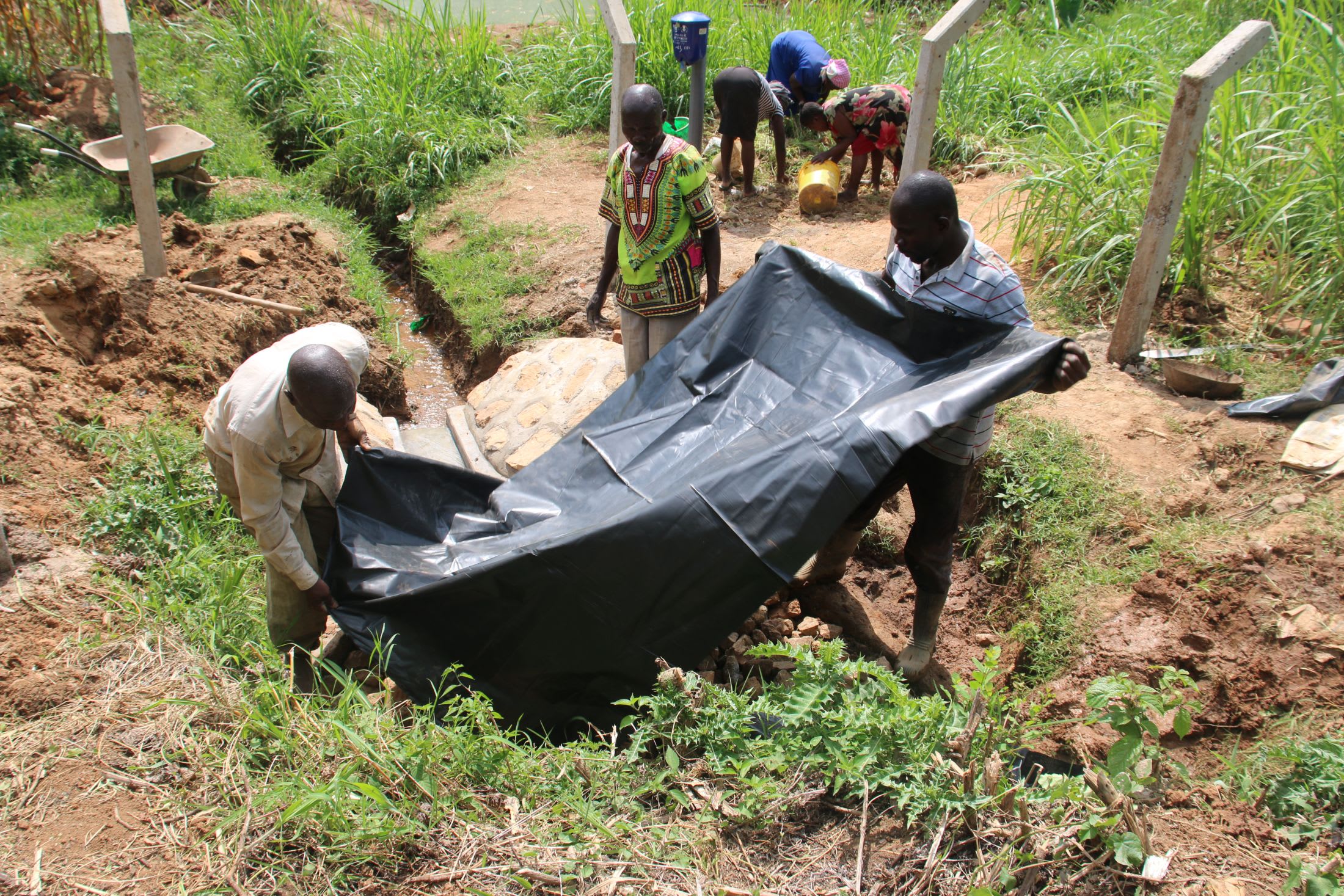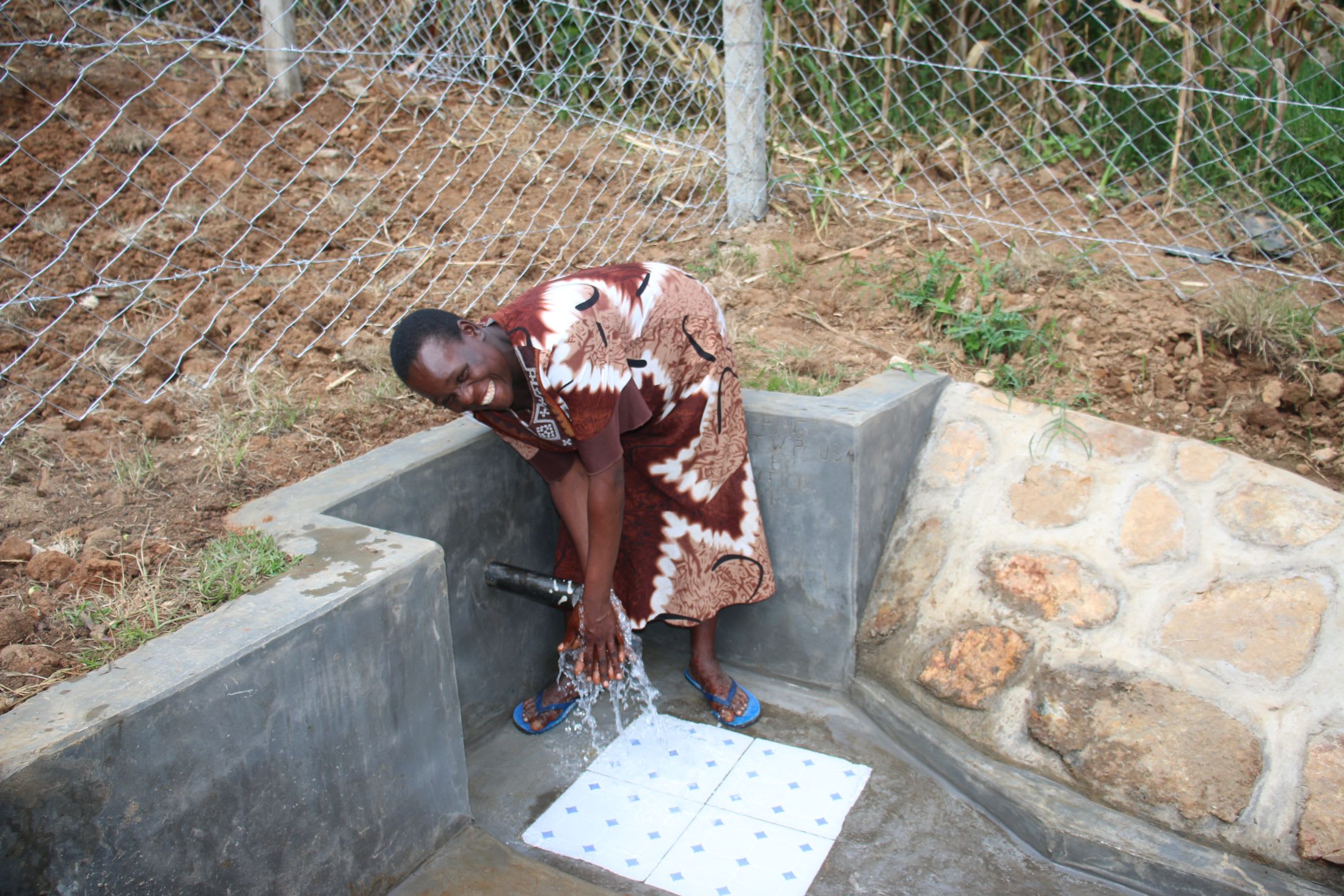It is easy to see that Okuku Spring, the primary water source for the 245 community members who live in Mwikabaniro, needs to be protected. In its current state, it only produces a slow stream of contaminated water that people should not be drinking.

"As a leader, [I] am psychologically disturbed by seeing people use this water," said the community's administrator, 43-year-old Loyce Fulasia, shown below collecting water.

The community came together and inserted a plastic pipe, hoping it would help with water collection. But the pipe failed to capture the two spring sources correctly, allowing water to seep out from other areas of the muddy bank. The low water flow rate slows collection times and wastes everyone's valuable time.
"Because of overcrowding at the water point, [the] majority of the community members decide to go fetch very early in the morning before [the] pressure mounts," said our field officer, Protus Ekesa.
Protus explained how overcrowding at the waterpoint is causing severe delays for everyone, young and old. Adults spend so much time waiting to collect water in the morning that they neglect their essential daily tasks.
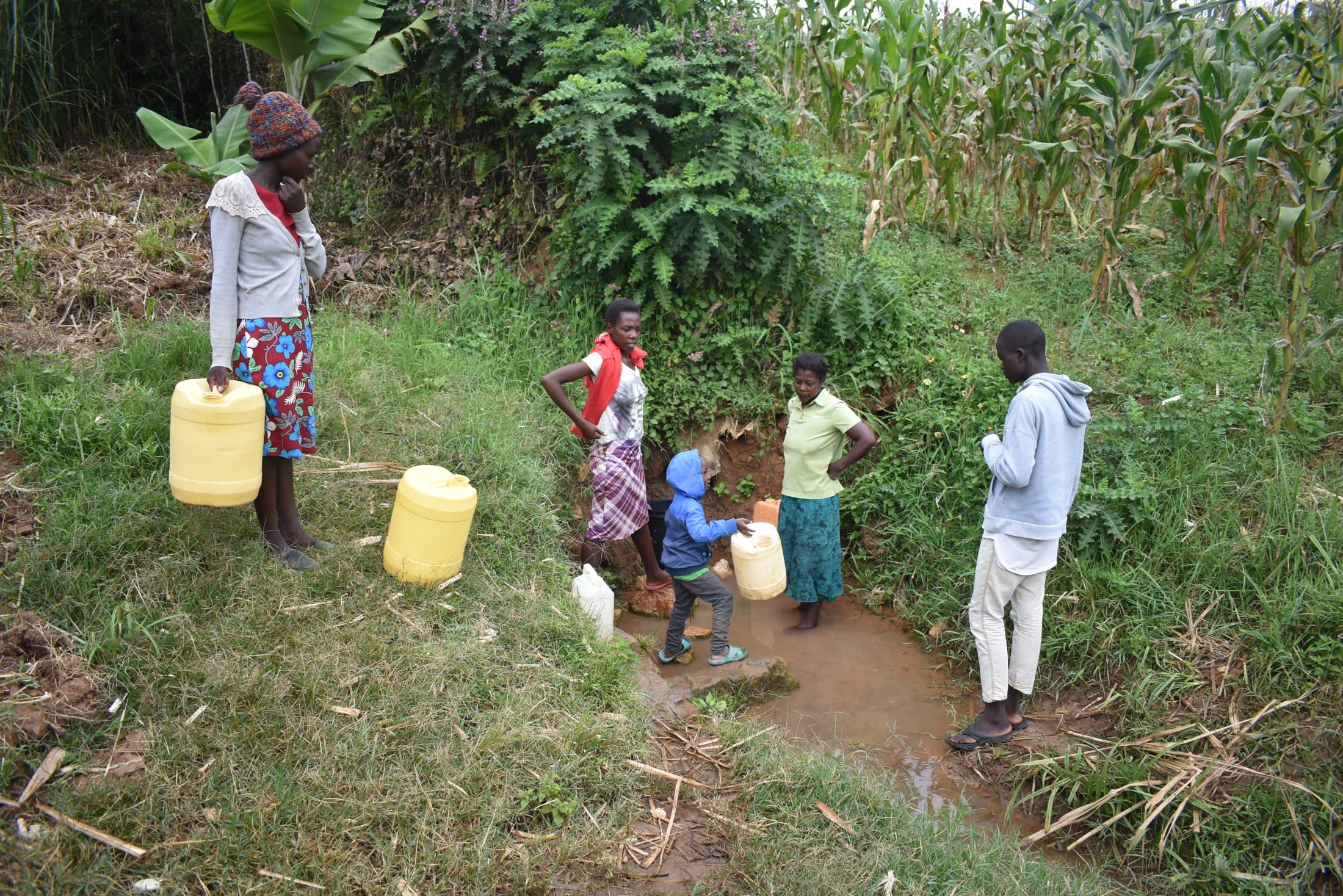
"The time they waste at the water point eats into their productive hours in the farms, and even in the small-scale business they engage in," said Protus.
Students, who collect water after school, also encounter long lines, so they run out of time to complete their homework, risking their academic futures.
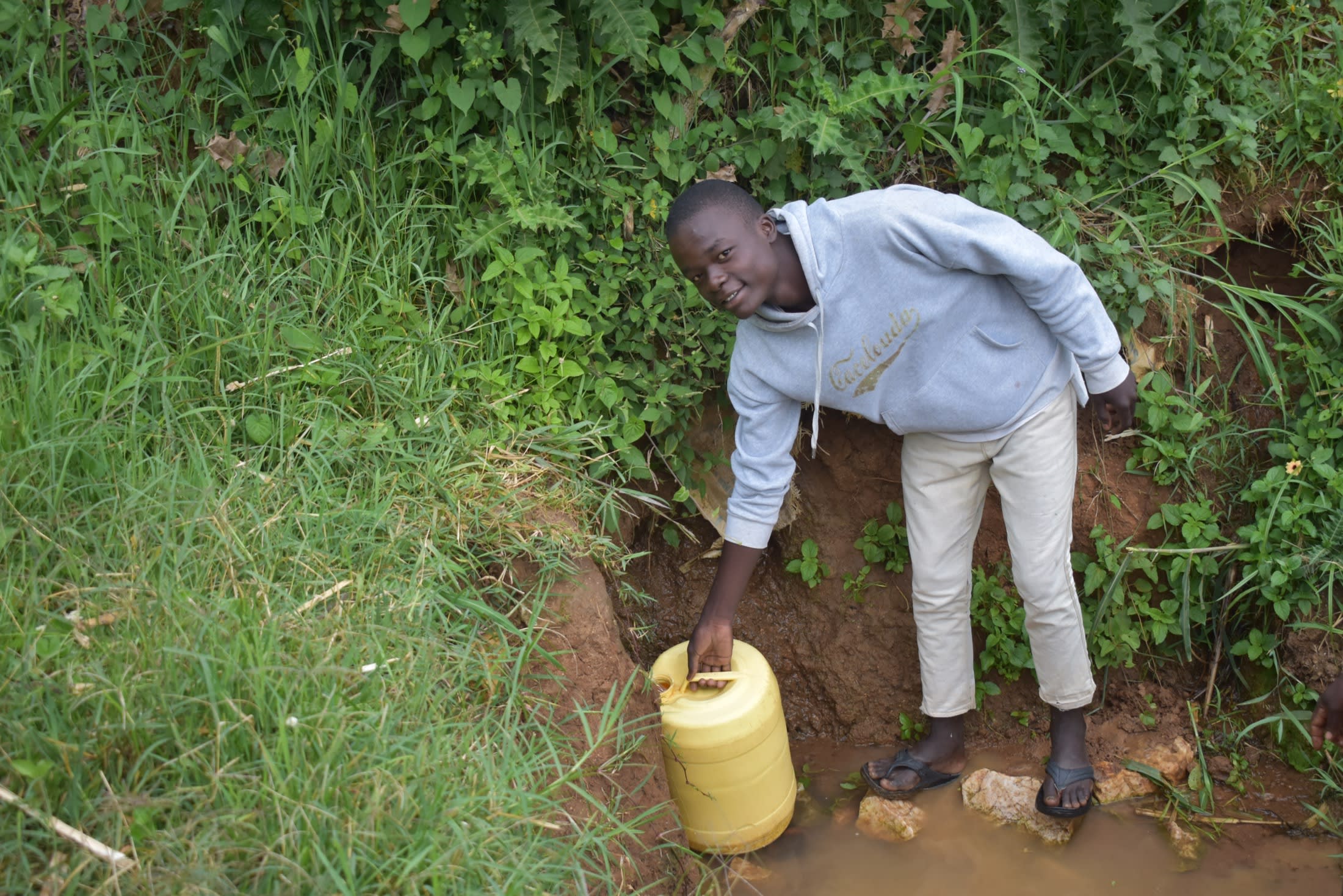
"Sometimes, I come to fetch water and find the pipe stolen. It's [a] time wastage [I] am not able to start my studies earlier," said 16-year-old Steven C., shown above collecting water.
Once community members finally collect water, they have no option but to drink it even though they know it will make them ill with water-related ailments like typhoid fever and diarrhea.
"They are requesting to be considered so that they can access clean water," concluded Protus.
With clean water easily and quickly accessible to the community members of Mwikabaniro, it will be exciting to see how their daily lives and health improve.
What We Can Do:
Spring Protection
Protecting the spring will help provide access to cleaner and safer water and reduce the time people have to spend to fetch it. Construction will keep surface runoff and other contaminants out of the water. With the community's high involvement in the process, there should be a good sense of responsibility and ownership for the new clean water source.
Fetching water is a task predominantly carried out by women and young girls. Protecting the spring and offering training and support will, therefore, help empower the female members of the community by freeing up more of their time and energy to engage and invest in income-generating activities and their education.
Training on Health, Hygiene, COVID-19, and More
To hold training, we work closely with both community leaders and the local government. We ask community leaders to invite a select yet representative group of people to attend training who will then act as ambassadors to the rest of the community to share what they learn.
The training will focus on improved hygiene, health, and sanitation habits in this community. We will also have a dedicated session on COVID-19 symptoms, transmission routes, and prevention best practices.
With the community's input, we will identify key leverage points where they can alter their practices at the personal, household, and community levels to affect change. This training will help to ensure participants have the knowledge they need about healthy practices and their importance to make the most of their water point as soon as water is flowing.
Our team of facilitators will use a variety of methods to train community members. Some of these methods include participatory hygiene and sanitation transformation, asset-based community development, group discussions, handouts, and demonstrations at the spring.
One of the most important issues we plan to cover is the handling, storage, and treatment of water. Having a clean water source will be extremely helpful, but it is useless if water gets contaminated by the time it is consumed. We and the community strongly believe that all of these components will work together to improve living standards here, which will help to unlock the potential for these community members to live better, healthier lives.
We will then conduct a small series of follow-up trainings before transitioning to our regularly scheduled support visits throughout the year.
Training will result in the formation of a water user committee, elected by their peers, that will oversee the operations and maintenance of the spring. The committee will enforce proper behavior around the spring and delegate tasks that will help preserve the site, such as building a fence and digging proper drainage channels. The fence will keep out destructive animals and unwanted waste, and the drainage will keep the area's mosquito population at a minimum.
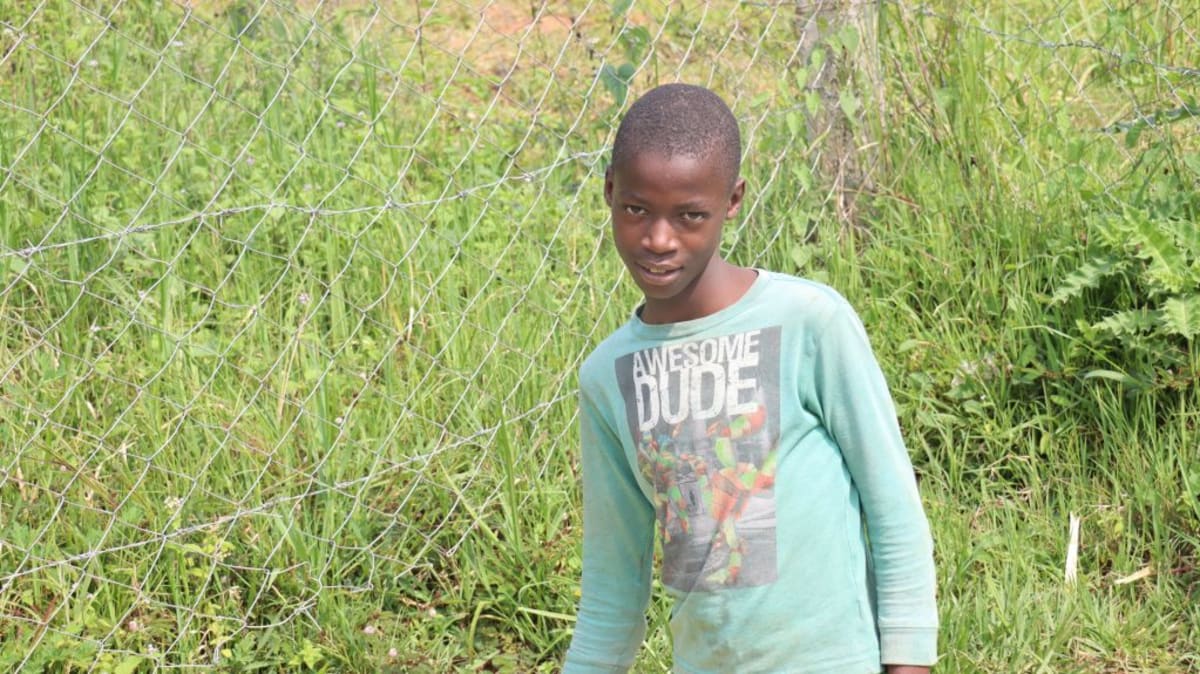



 Protected Spring
Protected Spring
 Rehabilitation Project
Rehabilitation Project














